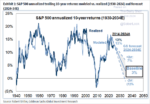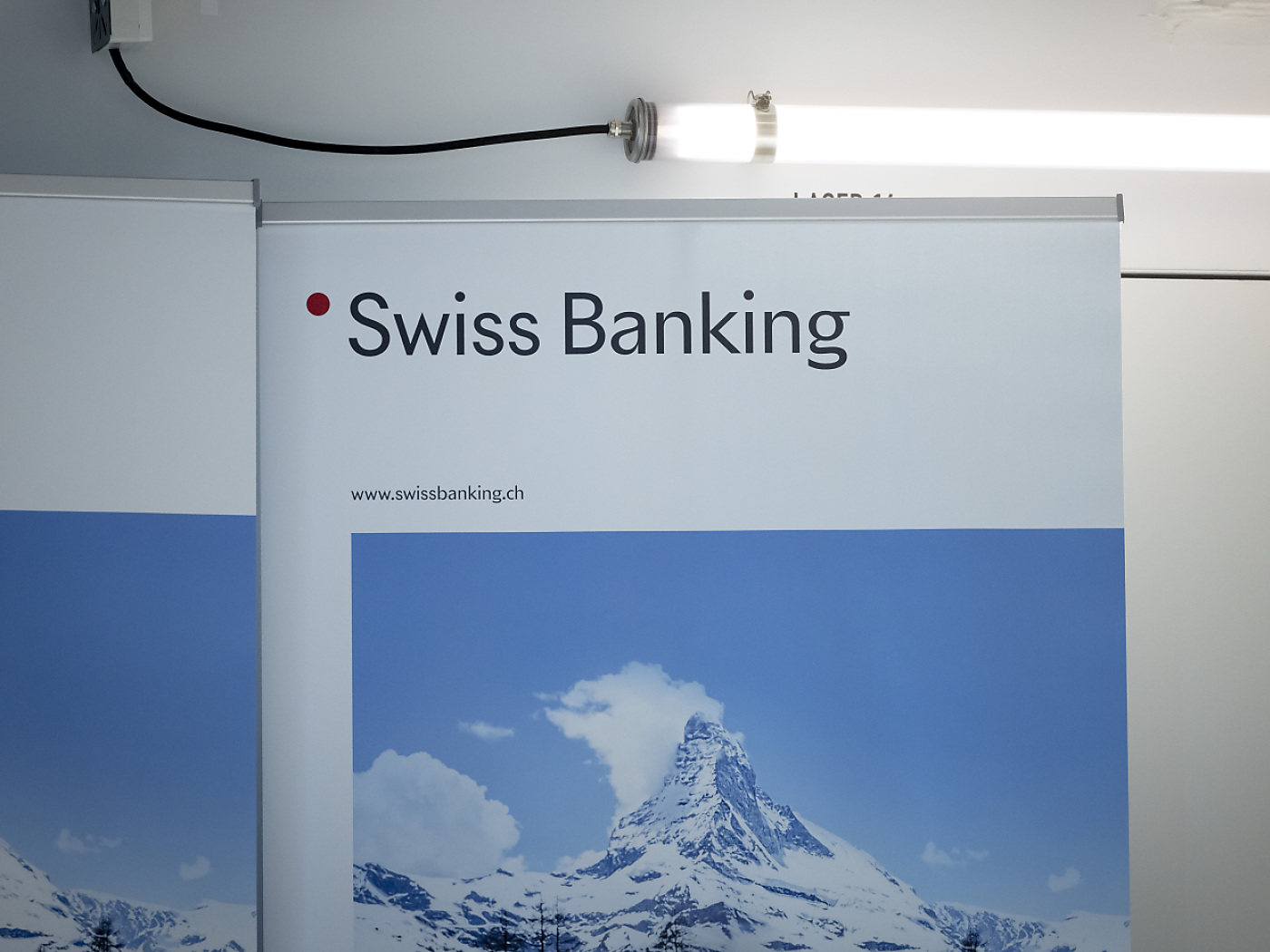Overview: Poor European flash PMI pushed on open door, giving the market a new reason to do what it was doing and that buying the dollar. The euro has approached important support around $1.08 and sterling is approaching the lower end of its two-cent trading range (~$1.26-$1.28). The greenback is consolidating against the yen and holding above JPY145. The Chinese yuan is little changed while the Mexican peso is extending yesterday's gains.
Despite the poor economic news, equities and bonds are mostly higher. Chinese equities and South Korea were the main exceptions in the Asia Pacific region, while Europe's Stoxx 600 is advancing for the third consecutive session. US index futures are also enjoying a firmer bias, ahead of Nvidia earnings later today. The weak PMIs have sent European bond yields more than 10 bp lower today and the benchmark Gilt yield is off 13 bp. The 10-year Treasury yield is down 6 bp to 4.26%. European two-year yields are mostly 7-9 bp lower today, while the two-year US Treasury yield is hovering near 5%, down about four basis points. Lower yields are offsetting the stronger dollar to let gold edge higher. It appears to be forming a constructive rounded bottom. A move above $1908, the 200-day moving average would help lift the tone. Demand concerns are offset the private estimate of another drawdown in US oil inventories and October WTI is being sold back toward the lows set last week (~$78.60). While the low for the month was near $78.30, the (38.2%) retracement of the rally since late June is a little lower (~$77.75) and the next retracement (50%) is around $75.80.
Asia Pacific
While several small central banks in the region are believed to have intervened to support their respective currencies, there is much interest in the PBOC and the BOJ. It is not clear that the formal and informal escalating action by Chinese officials is sufficient to turn the turn in light of the policy divergence and the large discount of Chinese rates. That said, Beijing has more tools it can deploy. Although Japan is more transparent that China, and the markets freer, the markets remain wary of official action. The 10-year JGB yield has edged up to new highs. Just like the dollar has held above CNY7.2650, it has held JPY145.00. The BOJ could step into the bond market, as it did earlier this month to buy 10-year bonds at market prices. Bloomberg calculations suggest that the BOJ is on track to buy JPY124.6 trillion (~$857 bln), a 12% increase from last year. While other central banks' balance sheets are shrinking, the BOJ's is increasing from 126.5% of GDP at the end of last year to stand slightly above 129% at the end of last month. Recall that the BOJ's market two bond purchase operations at market prices earlier this month were for about JPY700 bln.
Japan's preliminary manufacturing PMI stabilized in August and remains below the 50 boom/bust level for the third month. In fact, this year, it was above 50 only once and that was in May. It stands at 49.7, up from 49.6 in July. The services PMI rose to 54.3 from 53.8. It was 49.5 last August and 51.1 at the end of last year. The composite stands at 52.6, up from 52.2. Meanwhile, Japan's subsides for gasoline and kerosene, which lower headline inflation by as much as 0.5 percentage points, expire at the end of September. There seems to be political will to extend the subsidies. In contrast, Australia's preliminary PMI softened. The manufacturing PMI slipped to 49.4 from 49.6. The service PMI was fell for the fourth consecutive month and is at new lows for the year (46.7 vs. 47.9). The composite fell to a new low for the year (47.1). It finished last year at 47.5. Separately, the market waits for news from labor negotiations at Woodside, where last minute negotiations are trying to avert a strike as soon as September 2 at the LNG export facility in Australia,
The dollar recorded an inside day against the Japanese yen yesterday and is trading heavier today. The market seems to have paused, perhaps waiting for a signal by the BOJ as Japanese 10-year yields make new highs. A break of JPY144.90 could suggest a small double top is in place that would target around JPY143.40, which coincides with the (61.8%) retracement of the leg up from the August 7 low (~JPY141.50) and near the 20-day moving average (~JPY143.70 but rising). Recall that there are about $3.3 bln in options struck at JPY145, half expire today and half tomorrow. The Australian dollar has not been punished for the deterioration in the PMI. It stalled near $0.6460 yesterday, slightly in front of the (38.2%) retracement of the losses since being turned back from $0.6615 on August 10 and the (61.8%) retracement of the losses since August 15. It is trading inside yesterday's range. Even though it managed to settle near Monday's high ($0.6420) and above the five-day moving average (~$0.6415) for the first time this month, it still seems fragile. The greenback seems to be forging a range against the Chinese yuan between around CNY7.2650 and CNY7.3150. It is trading quietly today (~CNY7.2755-CNY7.2930). The PBOC set the dollar's reference rate at CNY7.1988, well-below the average in Bloomberg's survey of CNY7.2943 (range CNY7.20-CNY7.3044). State-owned banks were reported to have sold dollars, but it is difficult to know when there was on behalf of the central bank, for their own account, or for customers.
Europe
While the eurozone's manufacturing sector continues to contract but at a slower pace, according to the flash August PMI, the service sector is contracting. The aggregate manufacturing PMI has fallen every month since January before edging up in August, but and it has not been above to 50 since last June. It rose to 43.7 in August from 42.7 in July. The service PMI slowed for the fourth consecutive month and now entered contraction territory at 48.3 from 50.9, a new low for the year. The composite was dragged down to 47.0 from 48.6. It was at 49.3 at the end of last year. The same general pattern is seen in Germany. The manufacturing PMI posted a small gain (39.1 from 38.8) but still is the lowest of the major countries. Last August it was at 49.1. Its service sector is slumped. The preliminary August services PMI stands at 47.3 (down from 52.3). It is the third consecutive decline (peaked in April at 56.0). The composite PMI is at 44.7 (from 48.5). It is the second consecutive month below 50 and is at the lowest since 2020. If cross country comparisons are valid, France's manufacturing sector is not as weak as Germany's (France's manufacturing PMI is at 46.4 from 45.1 in July), but the service sector is contracting, though at a slightly faster pace than July (46.7 vs. 47.1) and is weaker than Germany. France's composite PMI was steady at 46.6. but below 50 for the third consecutive month. The eurozone economy expanded by 0.3% quarter-over-quarter in Q2 and the median forecast in Bloomberg's survey is for a 0.1% expansion here in Q3.
The UK economy has avoided a contraction since Q3 22, but the economy remains fragile. The August flash PMI points to further weakening and was well below expectations. The manufacturing PMI slowed to 42.5 (from 45.3). It has not risen since February and the last time it was above 50 was when Johnson was still prime minister (resigned July 7, 2022, but Truss did not succeed him until early September). The services PMI continues to unwind the gains that carried it to 55.9 in April from 48.7 in January. It is matches the year's lowest reading set in January. The composite has been driven below 50 for the first time since January. It stands 47.9, down from 50.8 in July and the year's peak in April at 54.9.
While the Australian dollar has not been punished for the disappointing PMI, the euro and sterling have. The euro recorded a bearish outside down day yesterday, trading on both sides of Monday's trading range and settling below Monday's low. In fact, the euro fell slightly below $1.0835 to a new low since June 15. Today's low has been slightly below $1.0810. The $1.08 area holds several technical levels. A little above $1.08 is the (61.8%) retracement of the rally from the March low (~$1.0515) and a little below $1.0790 is the (61.8%) retracement of the gains since the year's low in January ($1.0485). The 200-day moving average is between the two retracements. There are options for almost 960 mln euros at $1.0825 and options for 2 bln euros at $1.08 that expire today. A break could trigger stop loss selling. Sterling fared a smidgeon better than the euro yesterday as it did not fall through Monday's low ($1.2710), but it was turned back from $1.28 and fell to about $1.2720. It closed below its five-day moving average for the first time in six sessions. It has been sold to $1.2640. There are about GBP310 mln of options at $1.2641 that expire today. Key support is $1.2600.
America
The BRICS summit is underway. Before additional enlargement, it makes up a bit more than 40% of the world's population, slightly less than a third of GDP, and not quite a fifth of world trade. Previously, China wanted to make it into a free-trade bloc, but there was not much interest. Trade among the BRICS accounts for only around 6% of the members' trade. The BRICS bank, the New Development Bank (NDB) is hardly a threat. It is too small, only lends to member countries, still relies on the dollar and euro, and has adhered to sanctions on Russia. NDB has lent out the equivalent of $32.8 bln over the past eight years, and 2/3 has been in dollars. It aims to have 30% of its loans in members' currencies by 2026.
The US sees its flash August PMI and new home sales. BLS will announce the preliminary benchmark revisions to nonfarm payrolls. But the high-frequency data does not appear to be US rates and the dollar higher. They appear to have taken on a life of their own. We have argued that the sell-off in US Treasuries was being led by the US, and have noted that Japanese investors have been net buyers of foreign bonds since the Yield Curve Control was tweaked last December and more recently at the end of July (new Japanese portfolio flow data is out tomorrow) and the Fed's custody holdings for foreign central banks has risen by about $20 bln this month (new report is released Thursday). Yesterday, US rates and the dollar softened in Asia and Europe, but both came roaring back as the North American session got under way. The two-year yield settled above 5% for the first time since March 8. The 10-year reached a new high slightly above 4.36% before settling near 4.33%. Meanwhile, US bank indices fell for the seventh consecutive session. The index of large banks and the index of regional banks are off about 12.5%-12.7% since the late July highs.
Canada reports June retail sales. Auto sales may have held down the headline figure and excluding auto sales a 0.3% increase is the median forecast in Bloomberg's survey. Headline retail sales rose by 0.2% in May, sales excluding autos were flat. The monthly Bloomberg survey released on Monday showed economists (median) now see the economy growing by an annualized rate of 1.2% in Q2 and 0.7% Q3 before stagnating in Q4. The swaps market has a nearly 35% chance of a hike at the September 9 Bank of Canada meeting discounted. This seems a high.
The US dollar recorded an inside day against the Canadian dollar, but an important top does not look in place. The greenback has stalled near the (61.8%) retracement of the decline from the March high (~CAD1.3860) found near CAD1.3575,but buying on dips warns that the bulls are not satiated. The next target is the April and May highs in the CAD1.3650-CAD1.3670 area. Despite some intraday violations, the US dollar has not settled below the five-day moving average this month. The Mexican peso rose to its best since August 2, as Latam currencies, in general, performed well and accounted for five of the top 10 emerging market currencies yesterday. The peso's 0.55% gain was better than the top two G10 currencies combined. The US dollar briefly traded below MXN16.90 and settled below the (61.8%) retracement of the bounce from the multiyear low set in late July (~MXN16.6260). Follow-through selling today has pushed the greenback to about MXN16.8570. The peso is the second strongest emerging market currency today behind the South African rand.
Tags: #USD,Bank of Japan,BRICs,Currency Movement,Featured,newsletter,PBOC,PMI





















